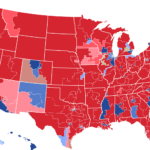When Golden State Warriors‘ head coach Steve Kerr confessed to using marijuana to help him recover from back surgery on The Warriors Insider Podcast on Friday, he added his voice to a growing chorus of individuals in the major college/professional sports world that is calling for change on how the various governing bodies in sport view the drug.
Marijuana Usage in Sports Emerging From the Shadows
Kerr’s point, as he restated in a Washington Post interview on Saturday, was that marijuana was the preferred option to help him manage his pain because of the litany of potential side effects associated with other drugs.
For Kerr and many others, including those employed as professional athletes, avoiding those side effects is worth risking the undesirable consequences that failing a league drug test or getting caught in possession of marijuana by the legal authorities would bring.
Upon reviewing the most-commonly prescribed pain killers for serious pain, like that endured by professional athletes as a result of their careers, three drugs seem to be most prevalent. Oxycontin, Percocet and Vicodin are all opiate derivatives, and carry with them similar risks.
The Prevalence of Opioids in America
Vicodin is still the most popular pain killer in the United States, and was prescribed 131 million times in 2011. Despite its prevalence, the drug’s potential for addiction and then abuse are infamously high.
Outside of the fact that abuse of the drug can deteriorate the user’s liver (the drug contains a half gram of acetaminophen, and two to four grams of acetaminophen within a 24-hour period damages the liver), there are threats of convulsions from abuse of the drug as well. At its worst, Vicodin abuse has put users in comas. If the user should try to get off the drug, they are likely to experience the withdrawal symptoms of muscle and bone pain, anxiety, aches, cramps, restlessness, chills, vomiting, diarrhea and nausea.
Because of its chemical similarity to Vicodin, Oxycontin carries all the same risks. Percocet is chemically similar as well, and abuse of the drug carries similar consequences. These dangerous substances are too regularly prescribed to the general public, accounting for 68 percent of opioid-overdose deaths in 2010. The risks of abuse and addiction should then be heightened among a segment of the population most likely to have a perceived need for such drugs, like professional athletes, and that’s exactly what is going on.
Opioids Even More Prevalent in Sports
Former National Football League offensive tackle Eugene Monroe has been one of the most vocal professional athletes advocating change on the use of opioids for pain management, including becoming the co-CEO of Green Thumb Industries, a startup dispensary for marijuana in Pennsylvania.
According to Monroe, he used prescription anti-inflammatories to deal with chronic joint pain during his playing career. He also states that many players couldn’t even practice, much less play games, without them. Monroe has detailed how opioid prescriptions are given to players with little regard for the potential for abuse and addiction.
Monroe may be the most vocal advocate, but he isn’t alone. He says that, “most players understand that medical marijuana has a real application in sports. I’m contacted weekly by active players looking to become educated on cannabis.”
Nate Jackson, another former NFL player, wrote about his desire to see professional athletes have access to marijuana for the New York Times. Another former NFL player, Brett Favre, perhaps became the most well-known player to go public with his painkiller addiction during his playing career. Current Miami Dolphins wide receiver Kenny Still has also gone on the record supporting replacing opioids with marijuana.
Bringing it back to the National Basketball Association, Blake Griffin of the Los Angeles Clippers has lent his voice in support of the same cause. Despite the growing chorus of voices advocating for change, the hard and fast policies punishing those who test positive for THC are still in place.
Seantrel Henderson is the latest NFL player who has been suspended for testing positive for marijuana. Henderson uses marijuana to treat the pain associated with his Crohn’s disease, and this is his second “offense.” Under the terms of the NFL’s collective bargaining agreement, the penalty for that is a 10-game suspension. Henderson intends to appeal this suspension, however, and is prepared to take the matter to court if necessary.
Henderson lives in New York, which is one of 26 states that has legalized marijuana in some form. There is no debate about Henderson’s medical need for the drug, or the benefits of its use that Henderson has experienced. If the dispute does go to court, Henderson’s case may be the catalyst that sparks real change in the NFL and then other leagues.
Momentum for Change Building in the NFL
As the tide of public opinion and legal policy favors marijuana decriminalization, owners of NFL teams and the NFL Players’ Association have felt the effects of that swelling.
The NFLPA has initiated a study into the use of marijuana for pain management, and several NFL owners have expressed support for policy changes on an anonymous basis. The information gathering and posturing seem to be leading to one thing: a serious discussion of policy changes when the next CBA is negotiated after the 2020-21 season.
By the time a new CBA is being negotiated, new cannabinoids (medicines derived from marijuana) may be added to the three which have already been approved by the United States Food and Drug Administration. Additionally, the use of cannabinoids already in existence may be expanded.
Cannabinoids Already Approved for Medicinal Use
Currently, United States federal code prevents doctors from prescribing marijuana. The physicians in the states which allow its use for medicinal purposes can only write recommendations. There are cannabinoids that doctors can prescribe in the US, however.
The three cannabinoids which have already been approved by the FDA are Cesamet, Dronabinol and Marinol. Dronabinol is a capsule that the FDA approved in 1985 to relieve the nausea of cancer patients undergoing chemotherapy.
Cesamet, although approved by the FDA for the same use as Dronabinol, has never been marketed in the US and is most prevalent in the United Kingdom.
Marinol has been approved for not only the same use as Cesamet and Dronabinol, but also to stimulate the appetite of individuals suffering from autoimmune deficiency syndrome. There is clinical research being done on the use of Marinol to treat neurological disorders, glaucoma and analgesia.
Pre-clinical research is being done with marijuana, THC and developmental cannabinoids for the treatment of migraines and multiple sclerosis as well. If any of the existing cannabinoids or ones yet to be developed were to receive FDA approval for pain management, that would give additional ammunition to parties seeking change in the drug policies of professional sports leagues. There is also growing support for the use of marijuana as a pain management method in the medical community.
The activity in the realms of culture, law and medicine regarding marijuana is moving toward its place in society as a drug of preference and utility. In the world of major college/professional sports, that utility is emphasized, especially in light of the other options that athletes have to manage the pain associated with their craft. In turn, radical change in the perception and use of marijuana by professional sport entertainment leagues may prove a catalyst in forever putting an end to the criminalization of marijuana in society at large.













